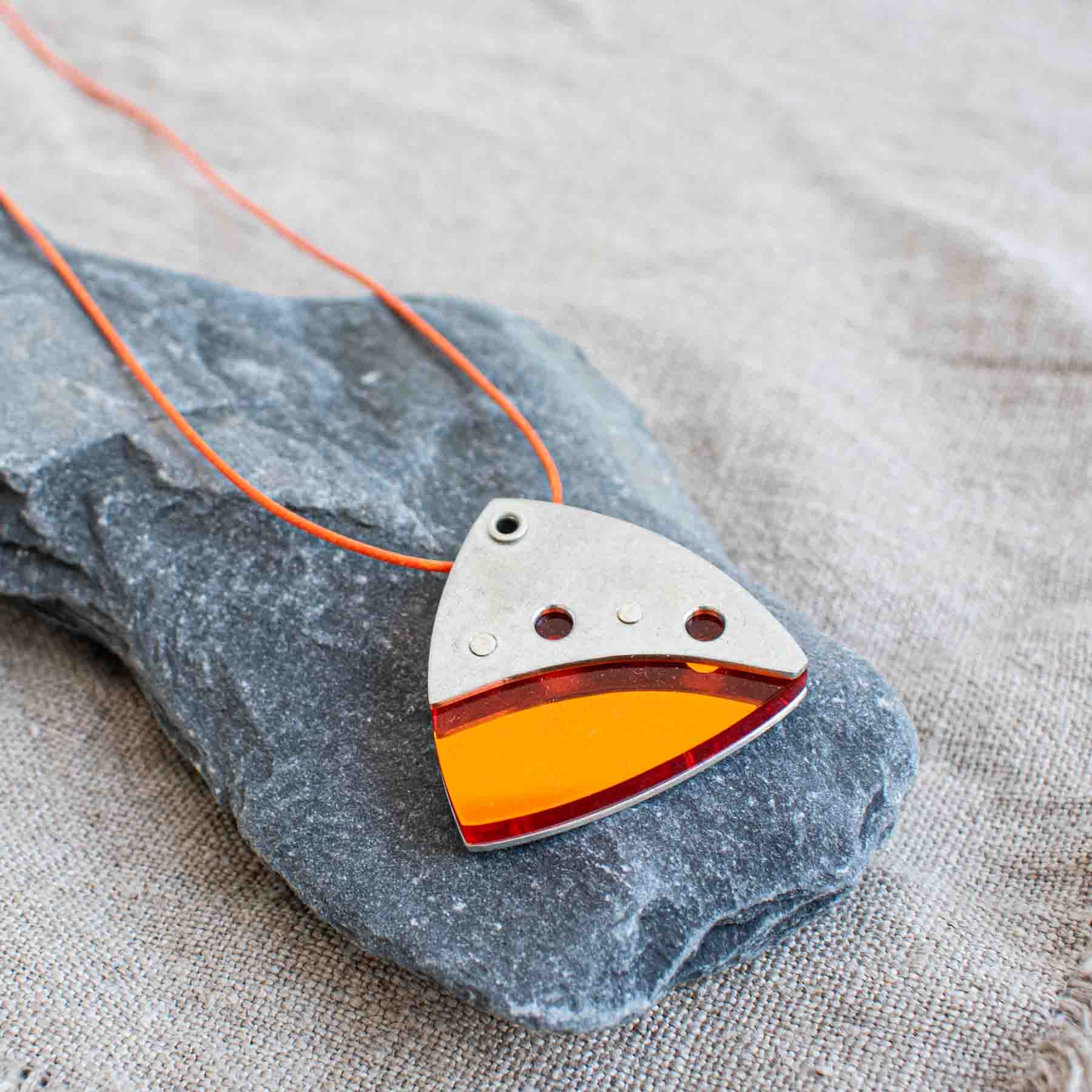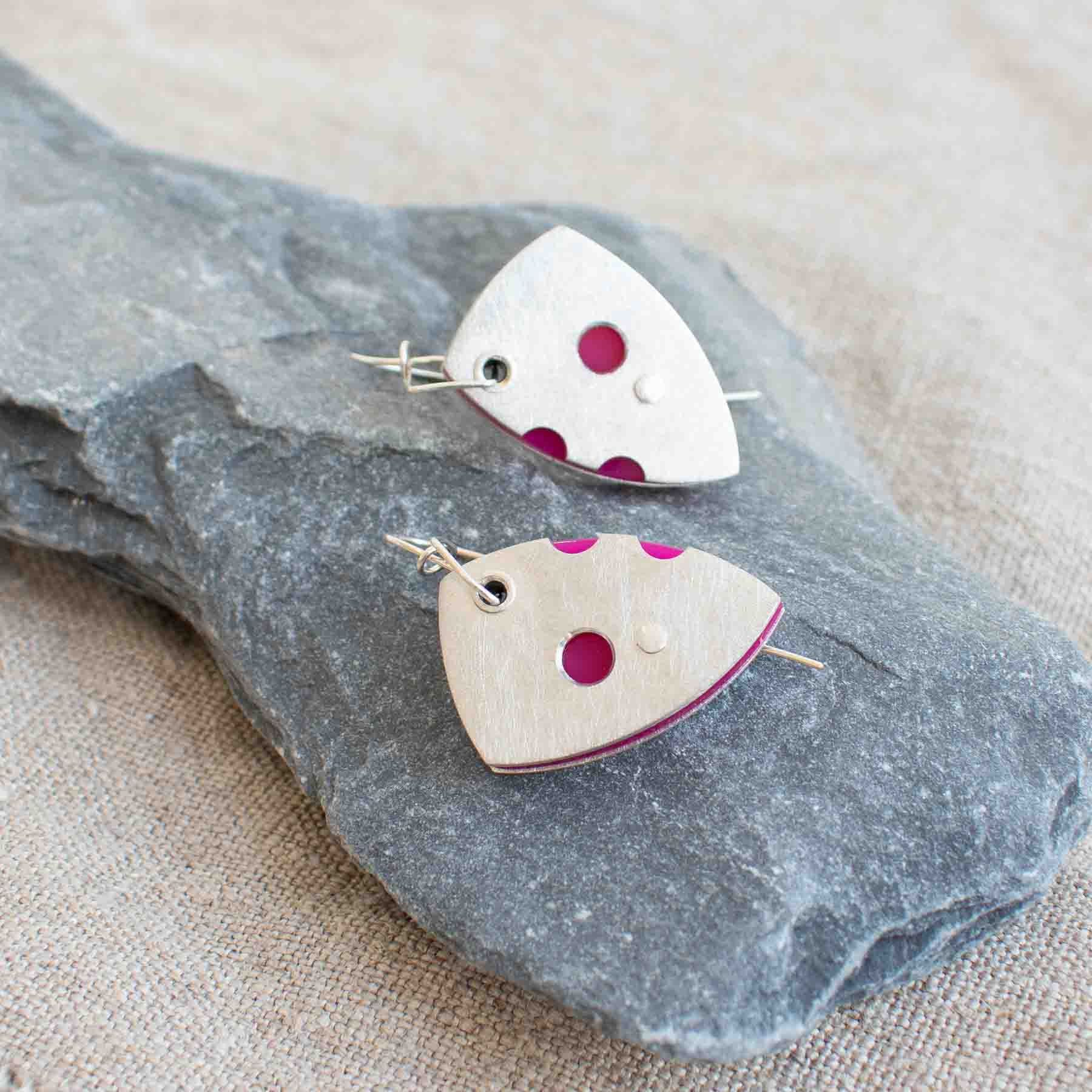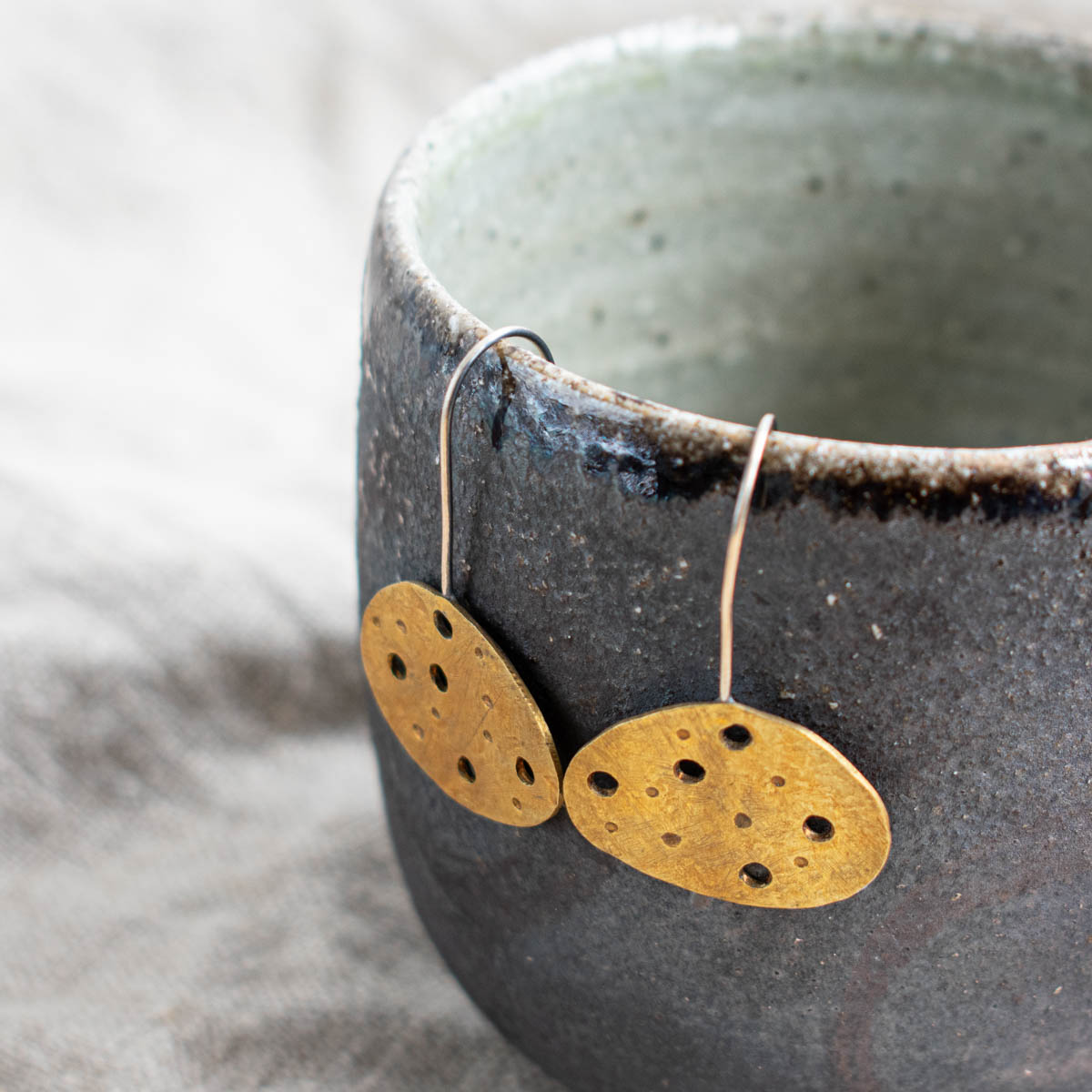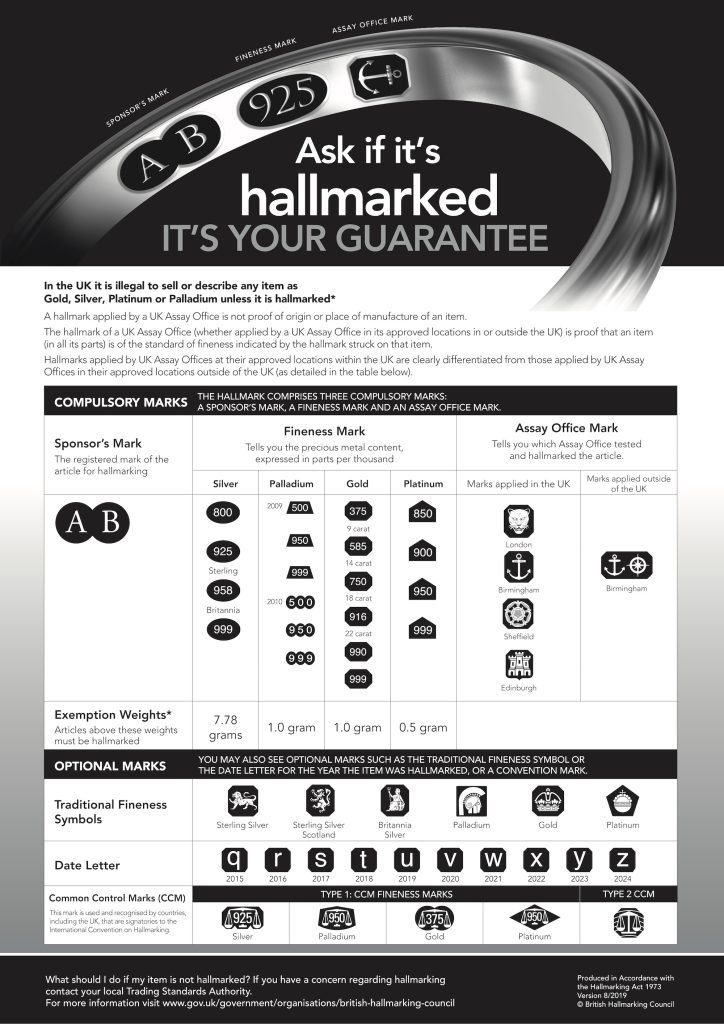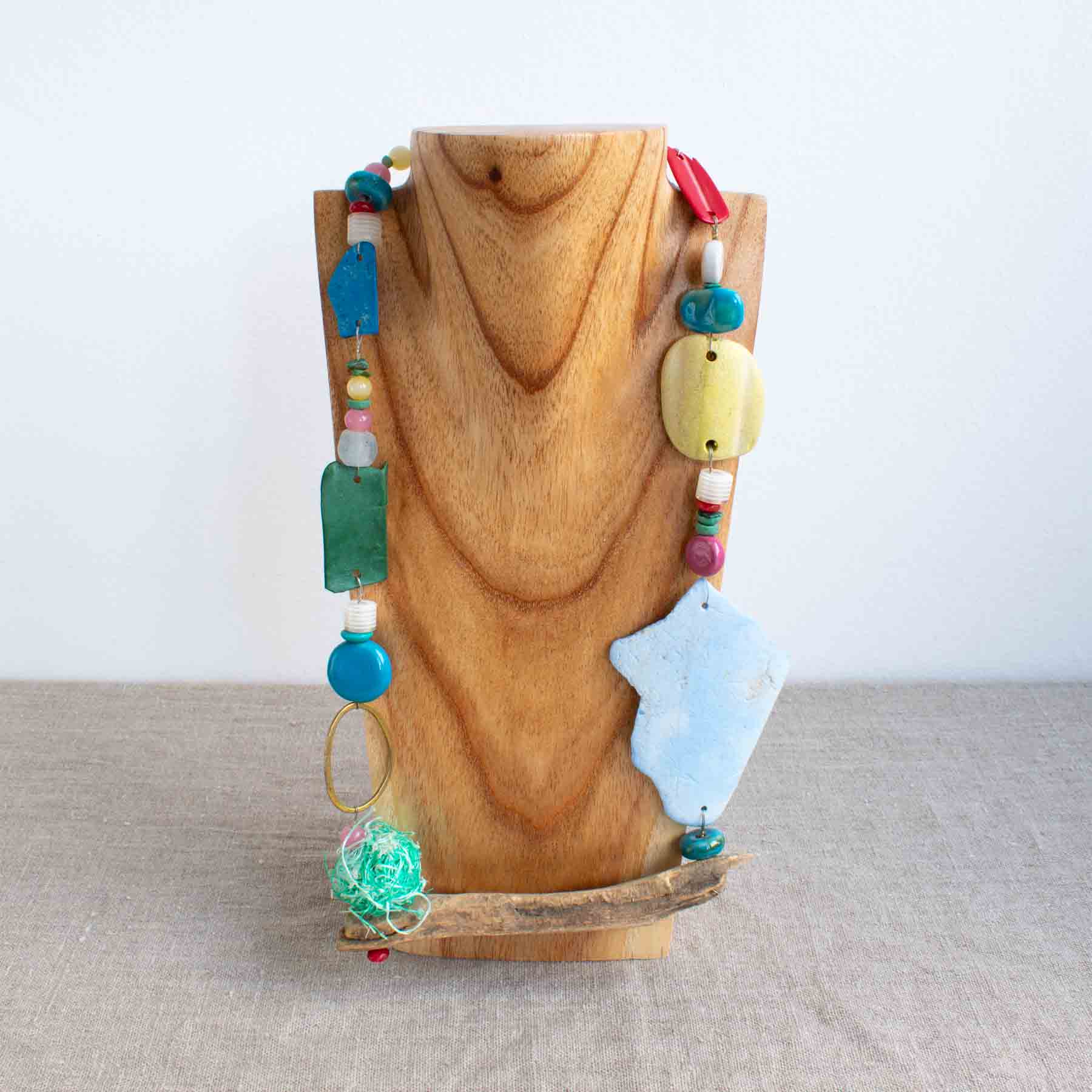The Ultimate Jewellery Metals Guide: From Gold Glam to Titanium Toughness
When it comes to buying jewellery, most people choose based on the style and the colour of the metal. What else? PLENTY else as we’ll show you! Understanding the properties of different metals and being clued up on the scramble of different metal terminology, is key to choosing jewellery that will last a lifetime with you.
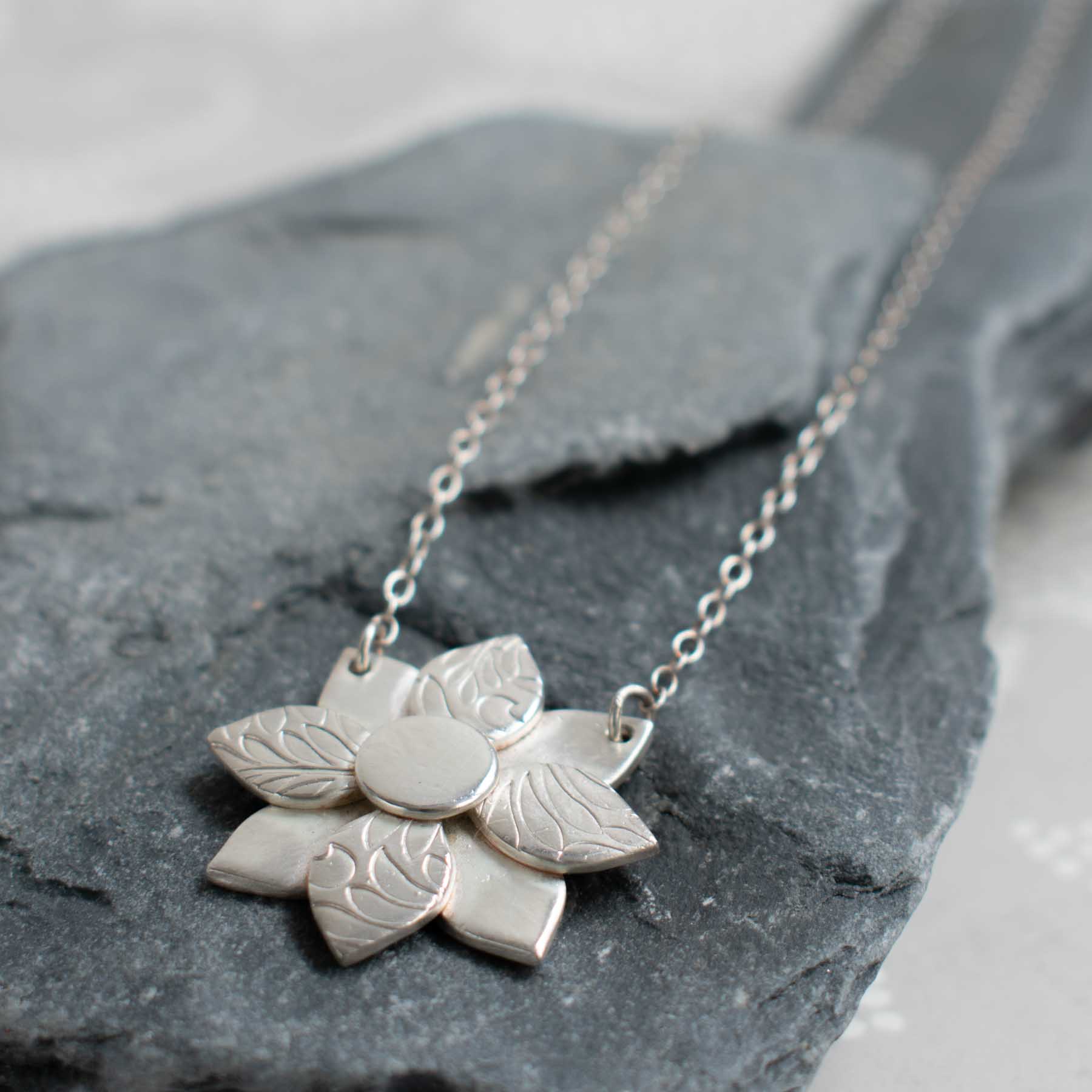
Art Deco Flower Necklace £50, by Article Studio. Handmade from silver metal clay.
How Metal Can Impact the Aesthetics, Durability, and Value of Jewellery
Gold and silver are the most known jewellery metals, but there is a whole host of metals being used to make jewellery that you might not have considered. Pewter, brass, titanium, palladium, to name just a few. Even gold itself can take on many forms, whether that’s yellow gold, white gold, 9K or 24K, different types of gold have different properties.
Some metals are hard, and others soft, meaning some will last and others will wear down quickly. If you have an active lifestyle and like to wear your jewellery daily, perhaps a harder wearing metal like titanium is best. If you’re after a statement piece for special occasions, a high karat gold will be a beautiful, luxurious choice.
Differing metals vary in rarity and origin, and therefore in value. We’ll guide you through which metals are best for jewellery, depending on your budget and lifestyle.
Metal Jewellery Terminology
You might feel bamboozled by the complex terminology surrounding jewellery. Is gold vermeil better than gold plated? What are ‘karats? What is rose gold?
Here is our handy guide to terminology used in metal jewellery:
Precious Metals
The four primary precious metals are gold, silver, platinum, and palladium. Precious metals are rare, naturally occurring metals, which have high economic value.
Alloy
Many metals in their purest form aren’t workable for making jewellery, they would be too soft to work with, and would have little longevity. Pure metals are often mixed together, to create an alloy, which has much better properties to work from.
An alloy means the final composition is made up of a mix of metals. This is normal, and a necessity for jewellers. For example, rose gold has become popular in recent years. Rose gold is an alloy of gold, copper and a small amount of silver. It’s the copper which lends the pinky hue to the gold, which alongside the addition of silver makes the gold more workable.
Different alloys allow for variation in the strength, colour and durability. Which gives us all of the wonderful choices when it comes to our jewellery!
Karats
‘Karat’ (K) or ‘Carat’ (ct) is the term used to measure the purity of gold alloys. It’s referring to the amount of fine gold within the alloy. Fine gold is really beautiful, but very soft, meaning it’s not particularly hardwearing and would likely mark and distort easily during wear. This is why alloying it with other metals is necessary.
How much fine gold is in each carat?
- 24K Gold contains 99.9% fine gold
- 22K Gold contains 91.6% fine gold
- 18K Gold contains 75% fine gold
- 14K Gold contains 58.5% fine gold
- 9K Gold contains 37.5% fine gold
9 and 18K gold are the most common. The higher the gold content the more expensive, the lower the gold content the more hardwearing the alloy. This is where considering your lifestyle comes into play.
If you’ll be wearing an item daily a lower karat gold will be more durable. If you are choosing a special piece of jewellery to be worn during occasions, you can choose a higher karat of gold.
Coating
Not all gold jewellery is created equal, and it pays off to be aware of other ‘gold’ options. Gold filled, gold plated, and gold vermeil, all use gold as a coating. Meaning the gold is just on the exterior, coating a different metal.
Gold Filled
You’d be forgiven for assuming gold filled means jewellery filled with gold, the metal running all the way through the design. But this isn’t quite the case! A cheaper base metal, such as brass or copper undertakes a mechanical process in which layers of gold are bonded to it, using heat and pressure. Gold filled is a better option than gold plating, as it has a higher gold content (a minimum of 5% of the piece), and so can last 10-30 years and is resistant to tarnishing. It’s gold for a cheaper price.
Gold Vermeil
Gold vermeil is where sterling silver has been electroplated with 14K gold. It’s a thinner layer than gold filled, and exposure to chemicals, sunlight, friction, etc, can cause it to wear down. Gold vermeil may last from six months to a few years. It’s worth noting however, that if you truly love your gold vermeil pieces you could get them replated with a jeweller. And the metal used underneath is sterling silver so may be better for those with metal allergies if the plating wears off.
Gold Plating
Gold plating takes us to the most affordable option, which contains the least gold. Here the base metal doesn’t have to be sterling silver, but can be any inexpensive metal, often copper or brass. A thin layer of gold plates the metal base. As it’s so thin, it wears off very quickly, and is susceptible to tarnishing and flaking with exposure to sunlight, soaps, saltwater and friction.
How to Choose the Right Metal for Your Jewellery
Wondering which metal suits you best for your jewellery? We break it down for you below.
Platinum
Platinum is one of the rarest metals in the world and is well suited for fine jewellery. Platinum has a beautiful chrome silver hue and could be mistaken for silver at first glance. Platinum “moves” as opposed to gold which “chips” off with wear (albeit microscopically), so over time the same weight of gold will eventually lose some of its volume.
£££
Pros: Platinum is extremely durable, resistant to tarnishing, and can be worn daily without impact.
Cons: Platinum is one of the most expensive metals, as it is rarer and more valuable than gold.
Best For: Everyday pieces of jewellery as it’s so hard wearing. Great for wedding rings!
Yellow Gold
Gold in its purest form is naturally a gloriously sunny yellow. Pure gold is very soft, so is alloyed with other metals to make it more durable. The price of yellow gold varies depending on the karats.
££-£££
Pros: An 18K yellow gold is fantastically dense and durable, containing 75% gold.
Cons: A 9K yellow gold may be more susceptible to tarnishing due to the high copper content. A 22K and 24K yellow gold will be soft, as it contains a high amount of pure gold. This could mean it marks and dents with time.
Best For: Choose the right karat of gold for your lifestyle, and you can have beautiful everyday pieces, or intricately designed occasion wear.
White Gold
White gold is an alloy of pure gold and white metals, for example silver, palladium, platinum or nickel. It has a lovely crisp colour similar to platinum or silver, and is a popular choice for everyday pieces that need to be durable. The price of white gold varies depending on the karats.
££-£££
Pros: All white gold alloys are more durable than silver, which makes them a great option for everyday pieces.
Cons: The addition of white metals takes away the traditional sunniness of the colour of gold, but many people love the colour of white gold. Nickel gives the hardest and strongest alloy but can cause skin irritation in some wearers. White gold is also given a coating with a precious metal called rhodium so it may need recoating if this wears away.
Best For: Especially great for wedding rings!
Rose Gold
Rose gold is an alloy of pure gold and copper, so it has a gorgeous pink tinge. The more copper, the redder the gold. The price of rose gold varies depending on the karats.
££-£££
Pros: A gorgeous pink gold which is popular, and especially lovely with gemstones.
Cons: Over time the copper can oxidise resulting in the gold developing a darker hue.
Best For: Everyday jewellery.
Silver
Cool, sleek silver has been gold’s counterpart for thousands of years. Most of us are gold or silver people right? Fine silver (999) can be soft, so is alloyed to give it durability. Sterling silver (925) is silver alloyed with a small amount of copper (7.5%) to make it workable.
££-£££
Pros: Sterling silver is durable, hypoallergenic, and a timeless classic when it comes to stylish jewellery.
Cons: Due to the copper content in sterling silver, there’s a chance sterling silver jewellery will tarnish. Argentium silver is more resistant to tarnishing, but slightly more expensive.
Best For: Fine silver jewellery is best for earrings and necklaces, as rings and bracelets might be prone to more dents and wear.
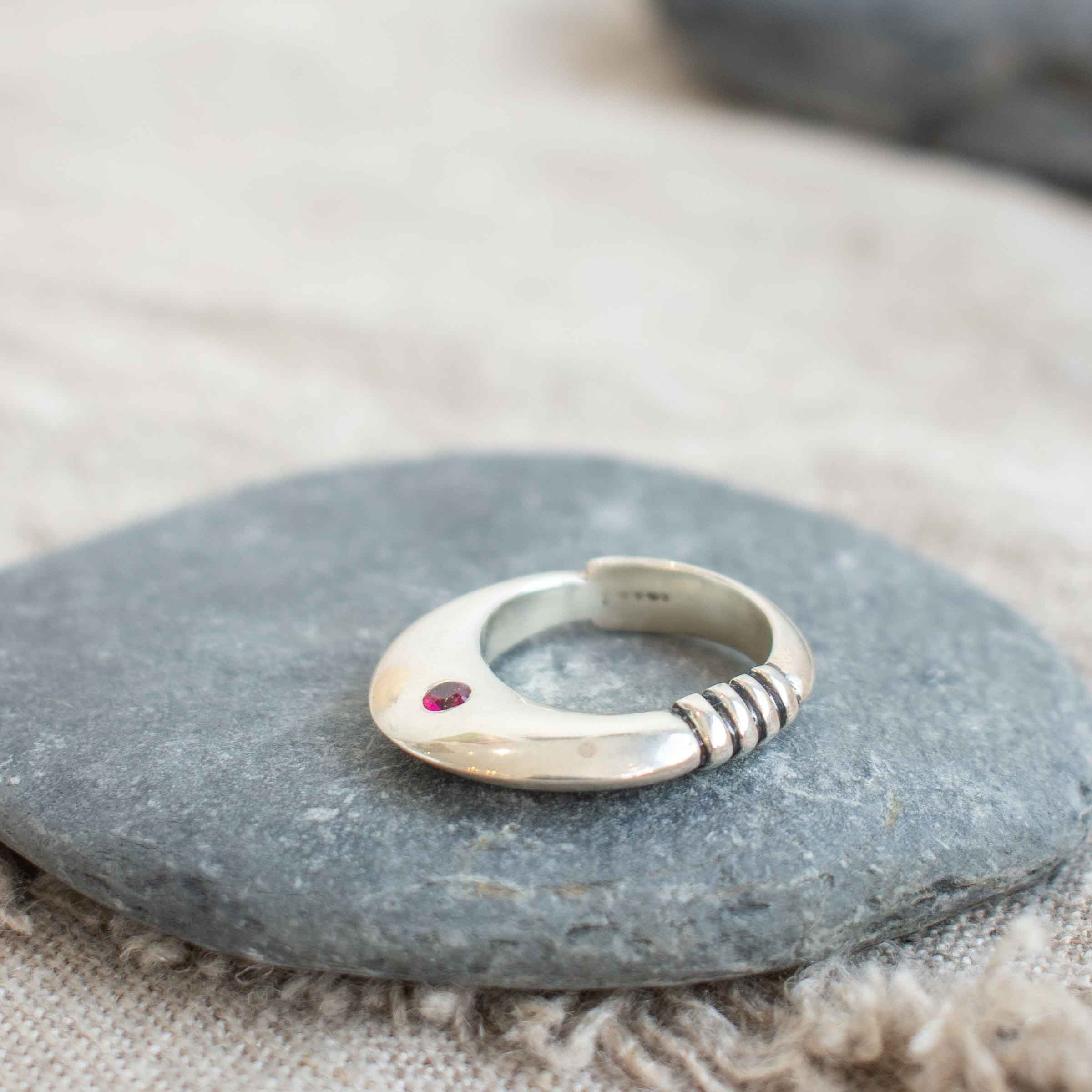
Fountain Ring with Ruby, £95. By TG Jewellery. Made using the wax carving technique.
Pewter
Pewter jewellery is an alloy of tin, copper and antimony. It’s therefore cheaper than gold and silver, and is softer and more malleable, which can be a downside when it comes to jewellery. Here’s a Cornish link for you – tin and copper mining was rife in Cornwall for hundreds of years, and although there are no active tin mines today, it’s still present in West Cornwall, untapped!
£
Pros: Pewter is cheaper than other metals, so pewter jewellery is more accessible. It is less likely to tarnish than sterling silver.
Cons: Due to the alloy, pewter is soft and malleable, meaning it could dent and bend.
Best For: For more decorative items of jewellery that won’t be subjected to regular wearing.
Brass
Another alloy, brass is made from a mix of copper and zinc in varying ratios. Brass is a popular choice in jewellery making as it’s a low-cost option, which when polished to a high shine still has a luxurious look.
£
Pros: Brass is a lower cost metal compared to silver and gold. It has a beautiful warm coppery colour. It is malleable, which allows intricate designs to be created.
Cons: The malleability mentioned above is also a con, as it’s prone to denting and damage. Due to its copper content brass can tarnish, requiring maintenance.
Best For: Jewellery which will be worn infrequently, and not often in wet conditions.
Copper
Copper jewellery has a bit of a bad reputation, possibly due to its tendency to turn your skin green. This is an oxidation reaction of copper mixing with oxygen and sweat and oils on your skin to leave a green layer. It’s totally natural, and not harmful. That said, pregnant women and those with heart conditions are advised not to wear copper.
££
Pros: A gorgeous warm, orangey hue (often used in gold alloys). Some say wearing copper helps ease arthritis symptoms. Copper is soft enough to shape and engrave well.
Cons: Tarnishing and leaving green marks on the skin.
Best For: Copper bracelets worn for medical reasons, or intricately designed pieces.
Titanium
Not just handy for your hip replacement! Titanium is an abundant metal which is naturally hardwearing. It’s often a popular choice for men’s jewellery with its greyish colour metal.
££
Pros: Titanium is hypoallergenic, so perfect for skin allergies and sensitive skin. As you might suspect, it’s also great at resisting corrosion, scratching, and denting.
Cons: Titanium tends to have a matte finish, so doesn’t achieve the high shine finish of gold, platinum and silver.
Best For: Titanium is best of everyday pieces of jewellery, at a more affordable cost.
Palladium
15 times rarer than platinum, palladium is an expensive metal due to its scarcity. Palladium looks very similar to platinum but is less dense. Meaning your ring will weigh you down less.
£££
Pros: Palladium is a hypoallergenic metal, so great for those with skin sensitivities. It’s also hardwearing and doesn’t tarnish.
Cons: The price of palladium jewellery may be off-putting, but its longevity is worth it to many!
Best For: Everyday jewellery, especially larger pieces as they will still be lighter than other metal alternatives.
Stainless Steel
Stainless steel is a mix of chromium, nickel and iron. It’s a good alternative to silver, and requires less polishing and upkeep than sterling silver does.
£
Pros: A more affordable metal, than can be worn every day. Stainless steel jewellery doesn’t tarnish and is durable.
Cons: As stainless steel is a rigid metal, it’s not a popular choice for intricate designs.
Best For: Everyday jewellery items
Confidence in what you buy
Hallmarking
You might have heard of hallmarking, but wondered what exactly is hallmarking? And does all jewellery need to be hallmarked? Fine jewellery is hallmarked as a legal requirement to showcase exactly what metals a piece is made from. There is a minimum weight for each metal, over which the jewellery piece must be hallmarked for sale. This ensures that you’re buying what you think you’re buying, and is brilliant for consumer protection.
Allergies
Jewellery allergies are not normally caused by the pure metal, but they can be caused by the metals used in any alloys. Nickel is the most commonly known allergy, with symptoms such as a rash, itchy skin, dryness, or in extreme cases – blisters.
People who suffer from metal allergies should look for jewellery made from materials such as hypoallergenic stainless steel, titanium and 18k gold. Lower karat yellow gold and sterling silver should be safe to wear, as long as they are “nickel-free”.
Plated jewellery can also cause issues as when the thin layer of silver or gold wears off the wearer can be exposed to the base metal underneath to which they may be allergic.
All our jewellers source their metals from European sources. All jewellery sold in the UK and EU must comply with Nickel legislation, which limits the amount of Nickel in jewellery. Jewellery from outside the EU may not conform to this legislation and be unsuitable for allergy sufferers.
Our Top Tips for Maintaining Metal Jewellery
A little care for your metal jewellery goes a long way. Over time all the soaps, hand creams, housework chemicals, and oils we interact with build up on our jewellery, dulling the metal and gemstones, and collecting in the crevices.
We would always recommend removing jewellery before doing any activities which could impact the metal such as gardening, and before showering or swimming (even though we are in Cornwall surrounded by sea!)
To clean your jewellery, soak it in tap water with a few drops of unfragranced, citrus-free washing up liquid and leave it for 15 minutes. Then using a soft toothbrush, give it a good scrub, getting into all the nooks and crannies, and dislodging any build-up. Give it a quick dry with a soft cloth, and your sparkling jewellery will be very thankful!
Environmental Considerations
Traditionally, jewellery doesn’t have many brownie points when it comes to environmental considerations. Often mined in a way that displaces villagers and wildlife, depletes natural resources, and exploits workers, fine jewellery can get bad press.
Thankfully, today, there are plenty more sustainable jewellery options available, designed and made by talented jewellers who prioritise the environment first.
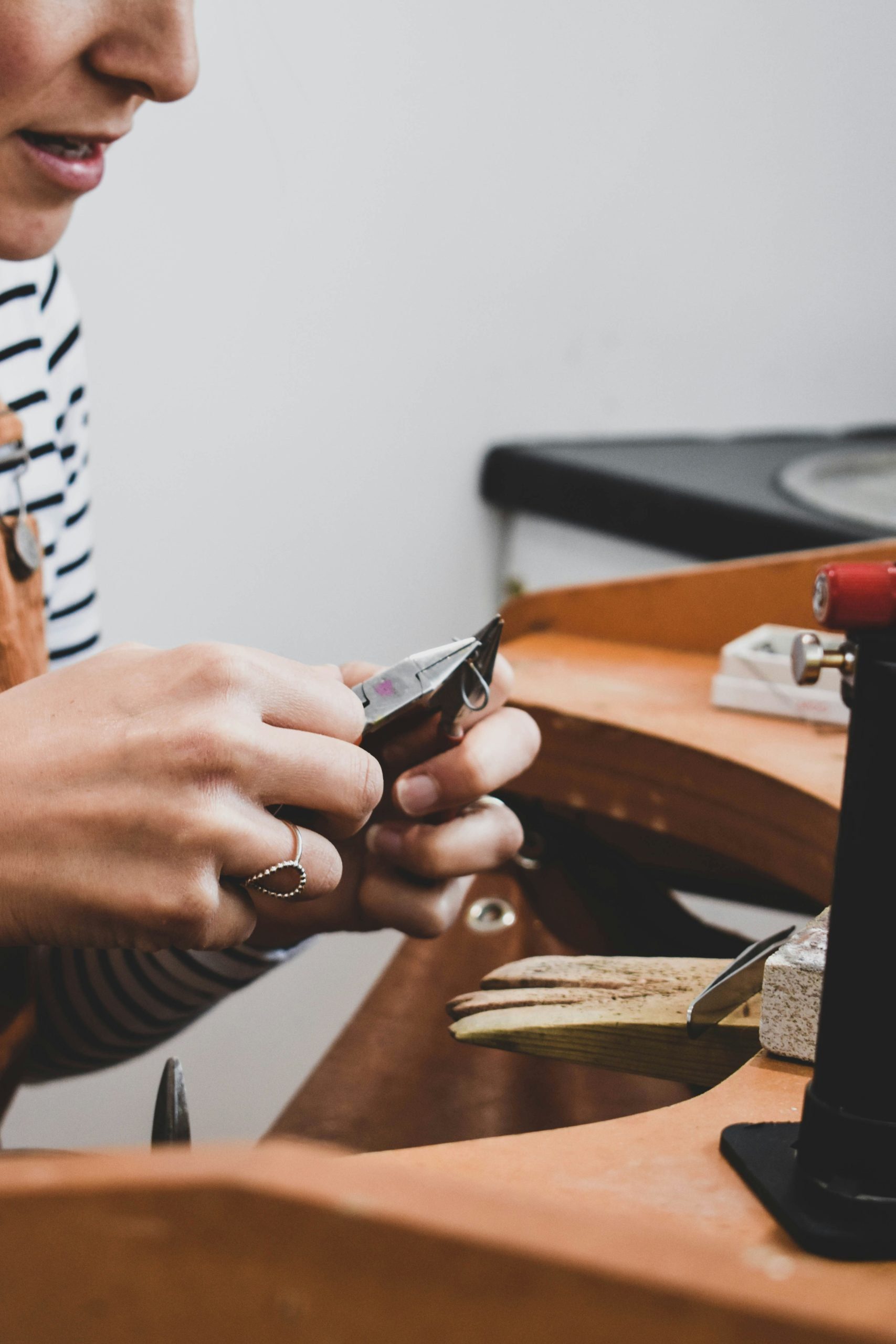
Recycled Metals
Many jewellery designers are using recycled metals, whether that’s melting down existing jewellery and metals, or sourcing waste materials, to create their jewellery. This focus on making items from what we already have, rather than using new resources, is a key shift in ethical production.
At Inspire Makers we regularly stock sustainable jewellers in Cornwall, using recycled materials to make their jewellery.
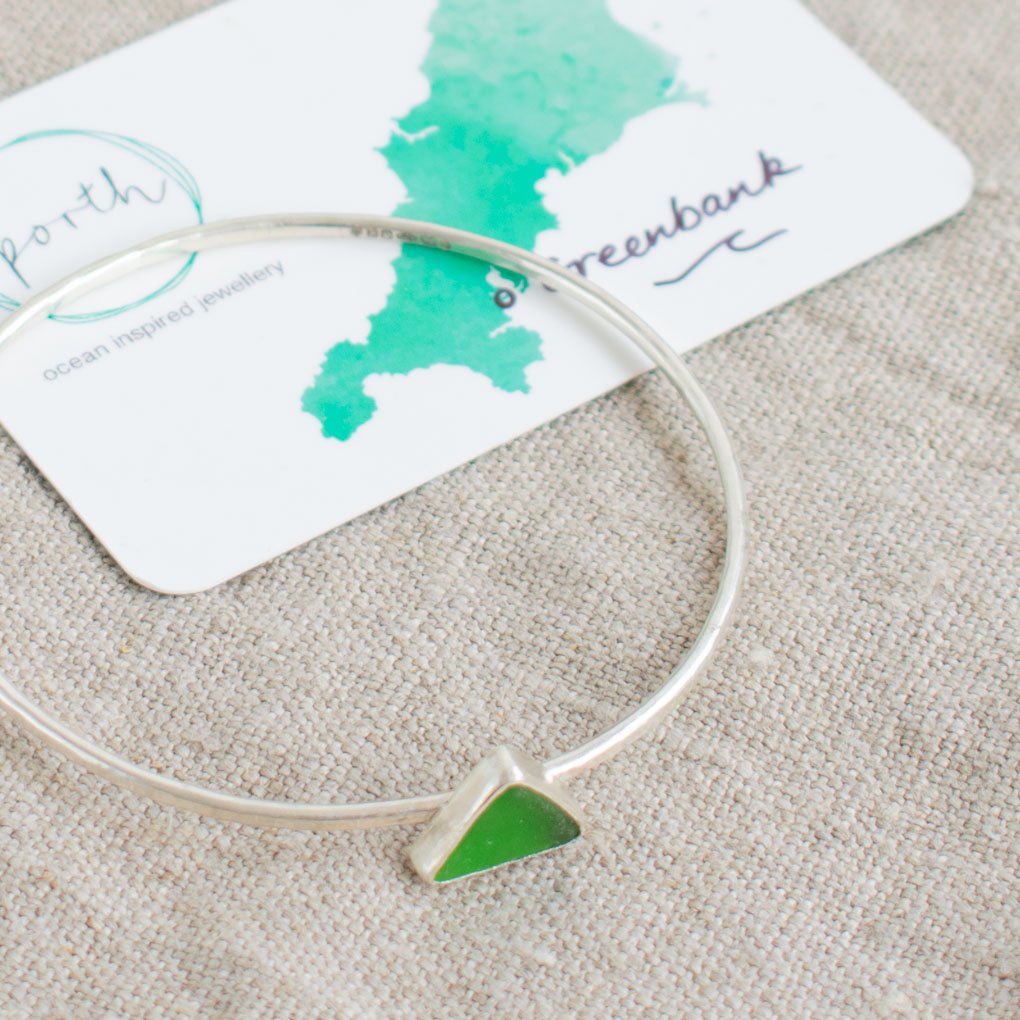
Seaglass Bangle, £110. By Porth Jewellery. Made using sea glass and recycled sterling silver.
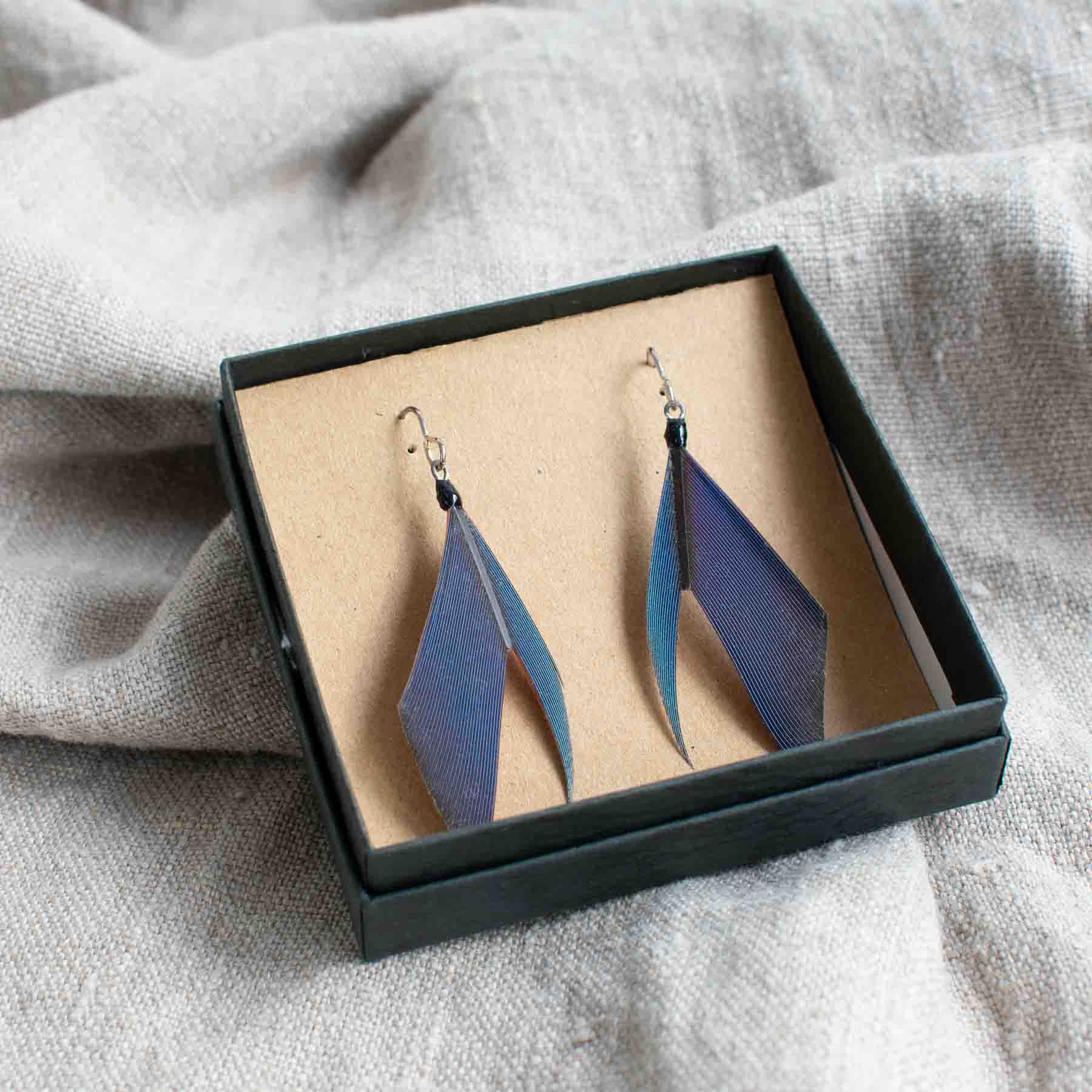
Macaw Chevron Earrings, £47. By Saffron and Peach. Responsibly sourced feathers and sterling silver ear wires.
Fairtrade Gold
Fairtrade Certified Gold is the world’s first independent ethical certification system for gold. When a piece of jewellery is Fairtrade, you’ll know it comes from mines which meet the Fairtrade Gold Standard.
This means that small-scale miners receive a fair deal for their hard work and are supported to make life better for themselves and their communities. It also helps to protect the environment.
Supporting Responsible and Ethical Sourcing
The murky ethics of sourcing metals and gemstones for jewellery has long been a problem, with workers treated unfairly and damage caused to the landscape and environment. But as a consumer, YOU can make a difference. Choose to buy from jewellers who support responsible and ethical sourcing, and who are transparent about their materials and processes. Enough of us do this, and the demand for new metals and stones will decrease.
Want To Hear More? We Would Love To Hear From You.
Sign up to the Inspire Makers newsletter for monthly updates on makers, workshops and exhibitions.


